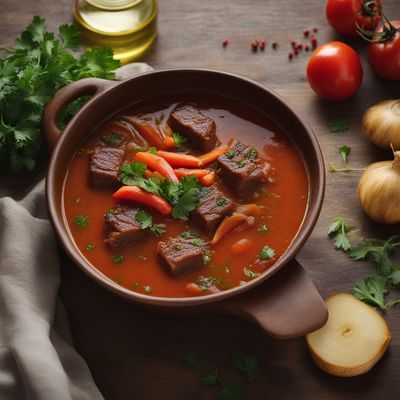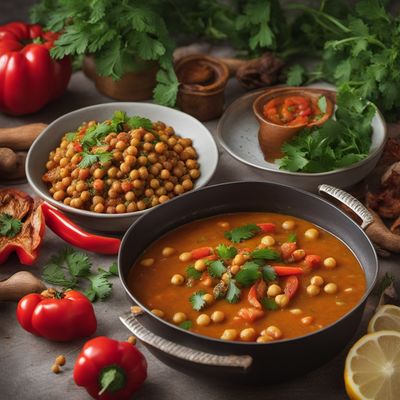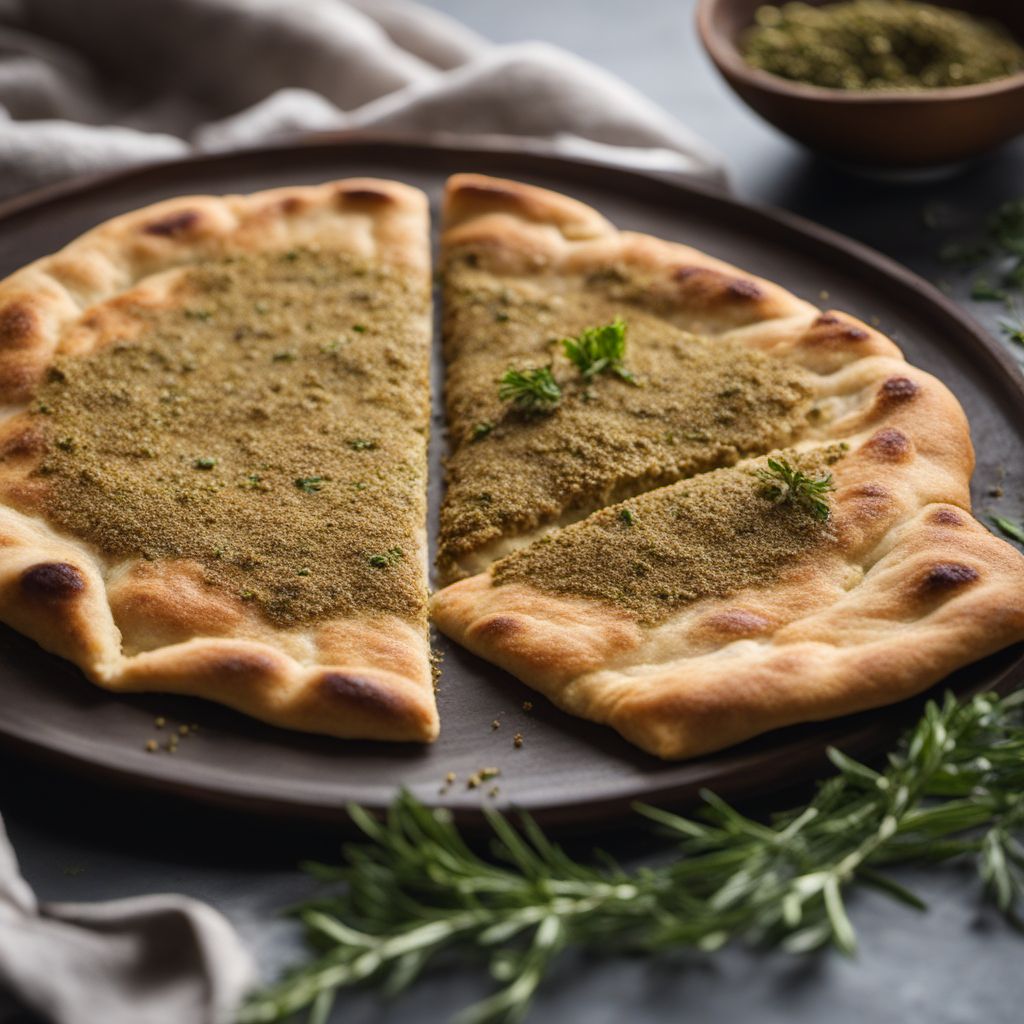
Recipe
Algerian Flaky Flatbread with a Twist
Savory Algerian Rougag: A Delightful Twist on Traditional Flatbread
4.6 out of 5
This recipe presents a delightful twist on the traditional Algerian rougag, a flaky and savory flatbread. With its origins in Algerian cuisine, this recipe combines the classic flavors and techniques of rougag with a unique twist, resulting in a delicious and versatile dish.
Metadata
Preparation time
40 minutes
Cooking time
12 minutes
Total time
52 minutes
Yields
6 servings
Preparation difficulty
Easy
Suitable for
Vegetarian, Vegan (if butter is substituted with a plant-based alternative), Dairy-free (if butter is substituted with a plant-based alternative), Nut-free, Egg-free
Allergens
Wheat
Not suitable for
Gluten-free (contains all-purpose flour)
Ingredients
-
2 cups (240g) all-purpose flour 2 cups (240g) all-purpose flour
-
1 teaspoon salt 1 teaspoon salt
-
1 teaspoon sugar 1 teaspoon sugar
-
1 teaspoon dried thyme 1 teaspoon dried thyme
-
1 teaspoon ground cumin 1 teaspoon ground cumin
-
1/2 teaspoon paprika 1/2 teaspoon paprika
-
1/4 teaspoon ground black pepper 1/4 teaspoon ground black pepper
-
1/4 cup (60ml) olive oil 1/4 cup (60ml) olive oil
-
2 tablespoons melted butter 2 tablespoons melted butter
-
3/4 cup (180ml) warm water 3/4 cup (180ml) warm water
Nutrition
- Calories (kcal / KJ): 180 kcal / 753 KJ
- Fat (total, saturated): 8g, 2g
- Carbohydrates (total, sugars): 23g, 1g
- Protein: 3g
- Fiber: 1g
- Salt: 0.6g
Preparation
-
1.In a large mixing bowl, combine the all-purpose flour, salt, sugar, dried thyme, ground cumin, paprika, and ground black pepper.
-
2.Make a well in the center of the dry ingredients and pour in the olive oil and melted butter.
-
3.Gradually add the warm water while mixing the ingredients together until a soft dough forms.
-
4.Transfer the dough onto a lightly floured surface and knead for about 5 minutes until smooth and elastic.
-
5.Divide the dough into 6 equal portions and shape each portion into a ball.
-
6.Cover the dough balls with a clean kitchen towel and let them rest for 30 minutes.
-
7.Preheat a griddle or a non-stick pan over medium heat.
-
8.Take one dough ball and roll it out into a thin circle, approximately 8 inches (20cm) in diameter.
-
9.Brush the surface of the rolled-out dough with a mixture of olive oil and melted butter.
-
10.Fold the dough into thirds, like folding a letter, to create layers.
-
11.Repeat steps 8-10 with the remaining dough balls.
-
12.Place the folded dough onto the preheated griddle or pan and cook for about 2 minutes on each side until golden brown and crispy.
-
13.Remove from the heat and repeat the cooking process with the remaining folded dough.
-
14.Serve the rougag warm and enjoy!
Treat your ingredients with care...
- Olive oil — Use extra virgin olive oil for the best flavor and quality.
- Dried thyme — If you prefer a stronger thyme flavor, you can increase the amount to 1 and a half teaspoons.
- Ground cumin — Toasting the cumin seeds before grinding them will enhance their flavor. Simply heat them in a dry pan over medium heat until fragrant, then grind.
- Paprika — Choose a mild or sweet paprika for a subtle flavor. If you prefer a spicier rougag, you can use hot paprika instead.
- Warm water — The water should be warm, but not hot, to activate the yeast in the dough.
Tips & Tricks
- For an extra flaky texture, you can brush each layer of the rolled-out dough with the olive oil and melted butter mixture before folding.
- Experiment with different herb and spice combinations to customize the flavor of the rougag. You can try adding dried oregano, ground coriander, or even a pinch of chili flakes.
- Serve the rougag with your favorite dips or spreads, such as hummus, baba ganoush, or tzatziki.
- If you prefer a softer flatbread, you can cook the rougag for a shorter time on the griddle or in the oven.
- Leftover rougag can be stored in an airtight container at room temperature for up to 2 days. Reheat it in a toaster or oven before serving.
Serving advice
Serve the warm rougag as a side dish with Algerian stews, soups, or salads. It can also be enjoyed on its own as a snack or used as a wrap for various fillings.
Presentation advice
Arrange the rougag on a platter or bread basket, allowing the flaky layers to be visible. Garnish with a sprinkle of dried thyme or paprika for an extra touch of color.
More recipes...
For Algerian cuisine » Browse all
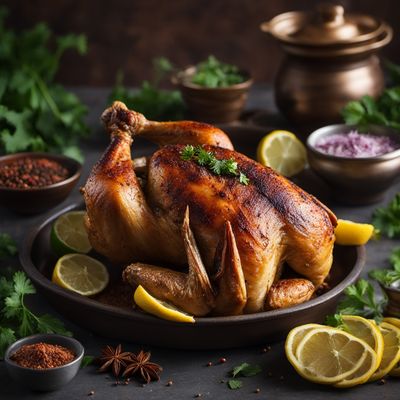
Algerian-style Roasted Chicken with Spices and Herbs
Saffron-infused Roasted Chicken with Algerian Spices
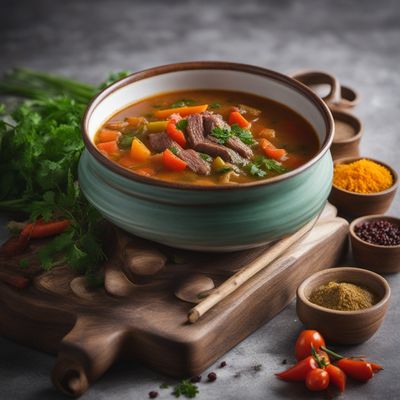
Algerian Frik Soup with Lamb and Vegetables
Hearty Frik Delight: A Taste of Algerian Comfort

Algerian Chakhchoukha with Spiced Lamb and Vegetables
Savor the Flavors of Algeria: Spiced Lamb and Vegetable Chakhchoukha
More Algerian cuisine dishes » Browse all

Mahjouba
Mahjouba is a traditional Algerian flatbread that is made from a mixture of flour, semolina, and water. It is typically served with a variety of...
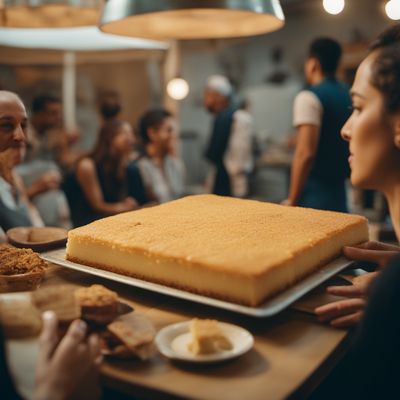
Kalb-el-louz
Semolina Cake
Kalb-el-louz is a traditional Algerian dessert that is made from semolina, almonds, and orange blossom water. It is a sweet and fragrant treat...

Zurrukutuna
Bread soup
Zurrukutuna is a traditional Basque soup that is made with bread and garlic. It is a simple and hearty soup that is perfect for cold winter days.


